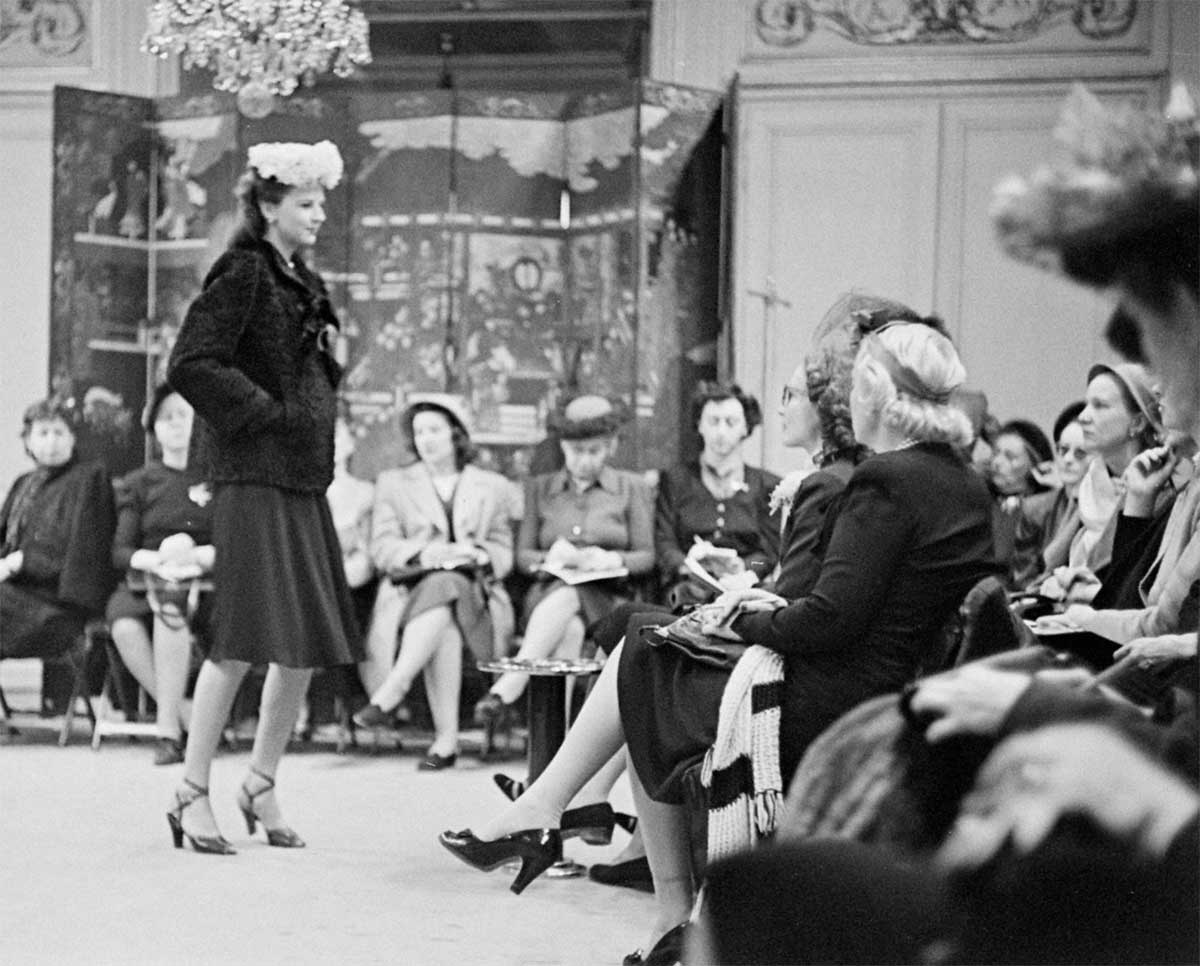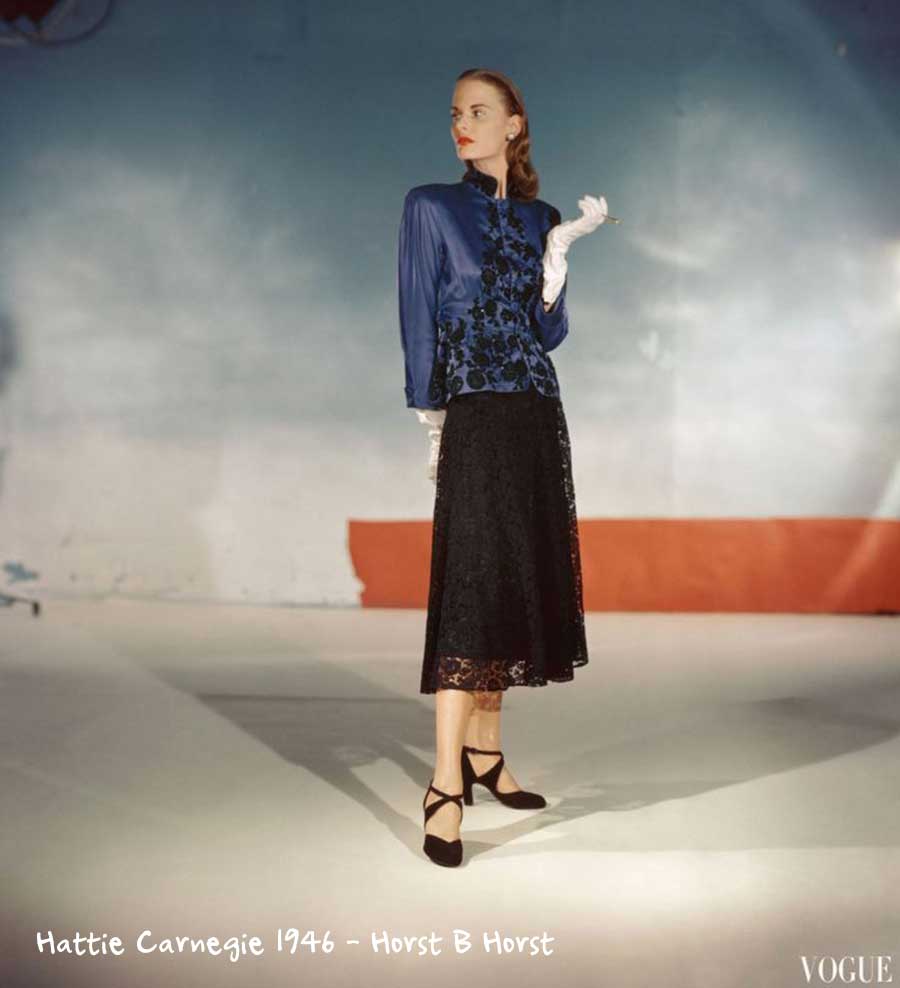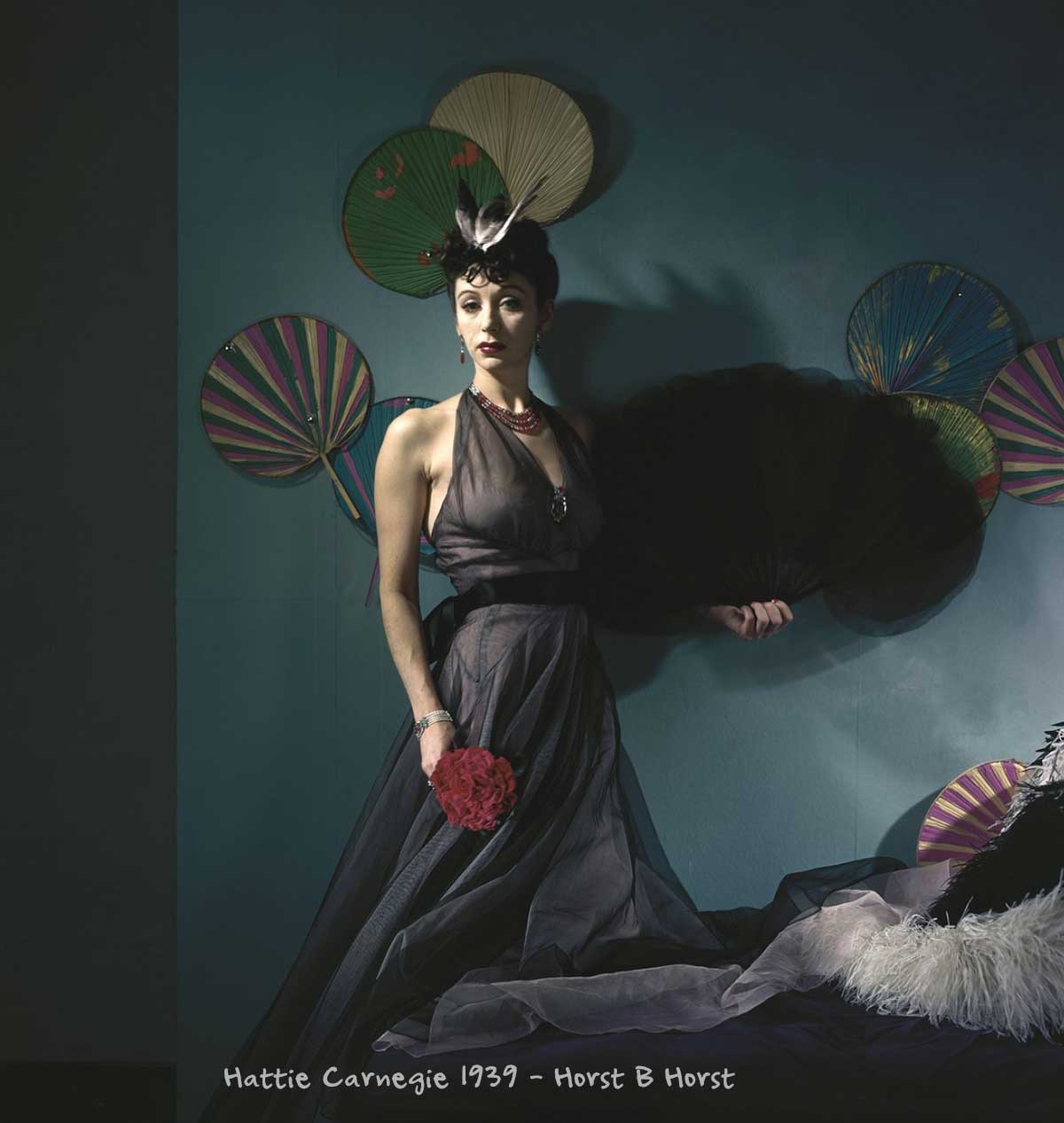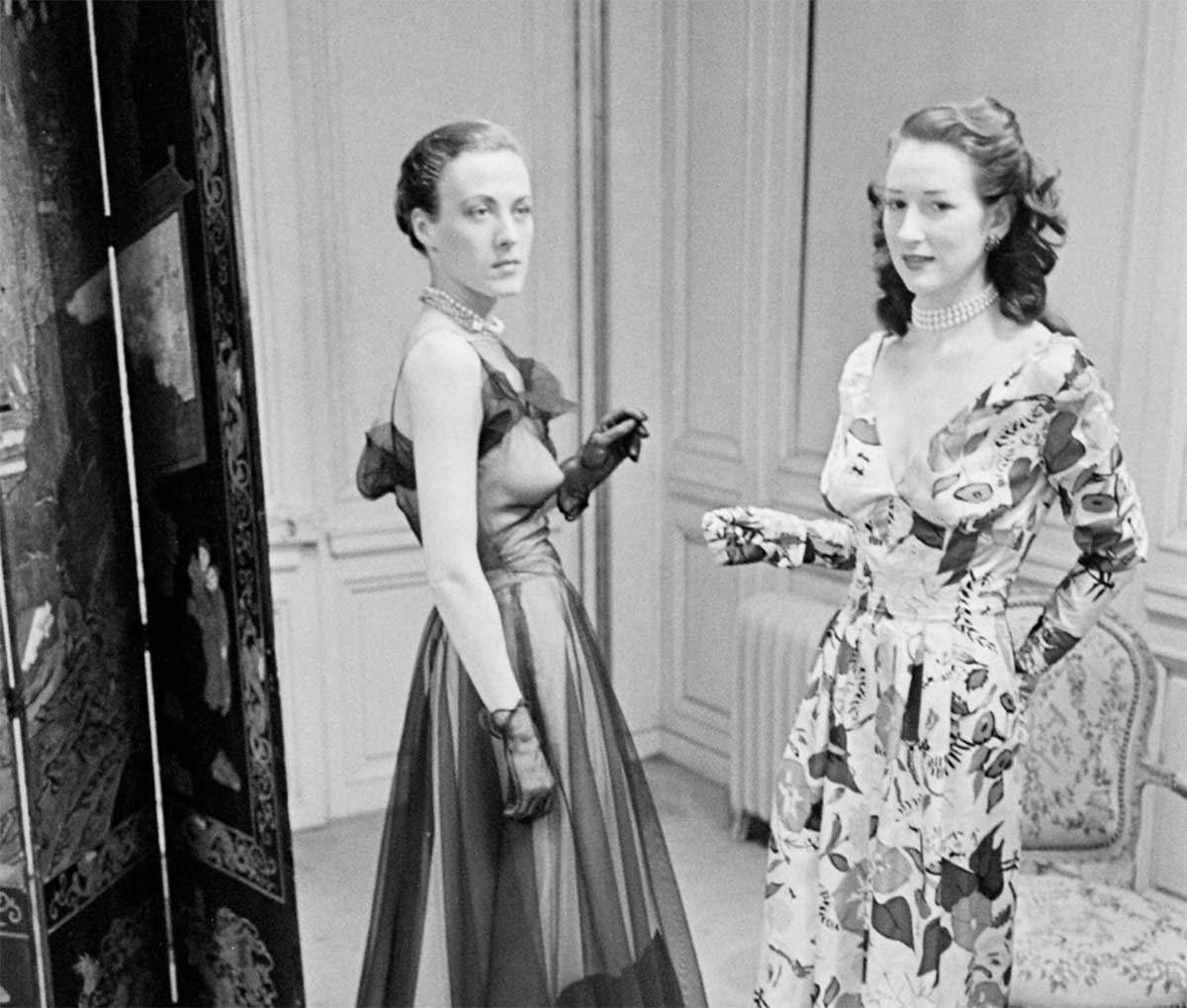Profile of an American Fashion Icon 1945 –
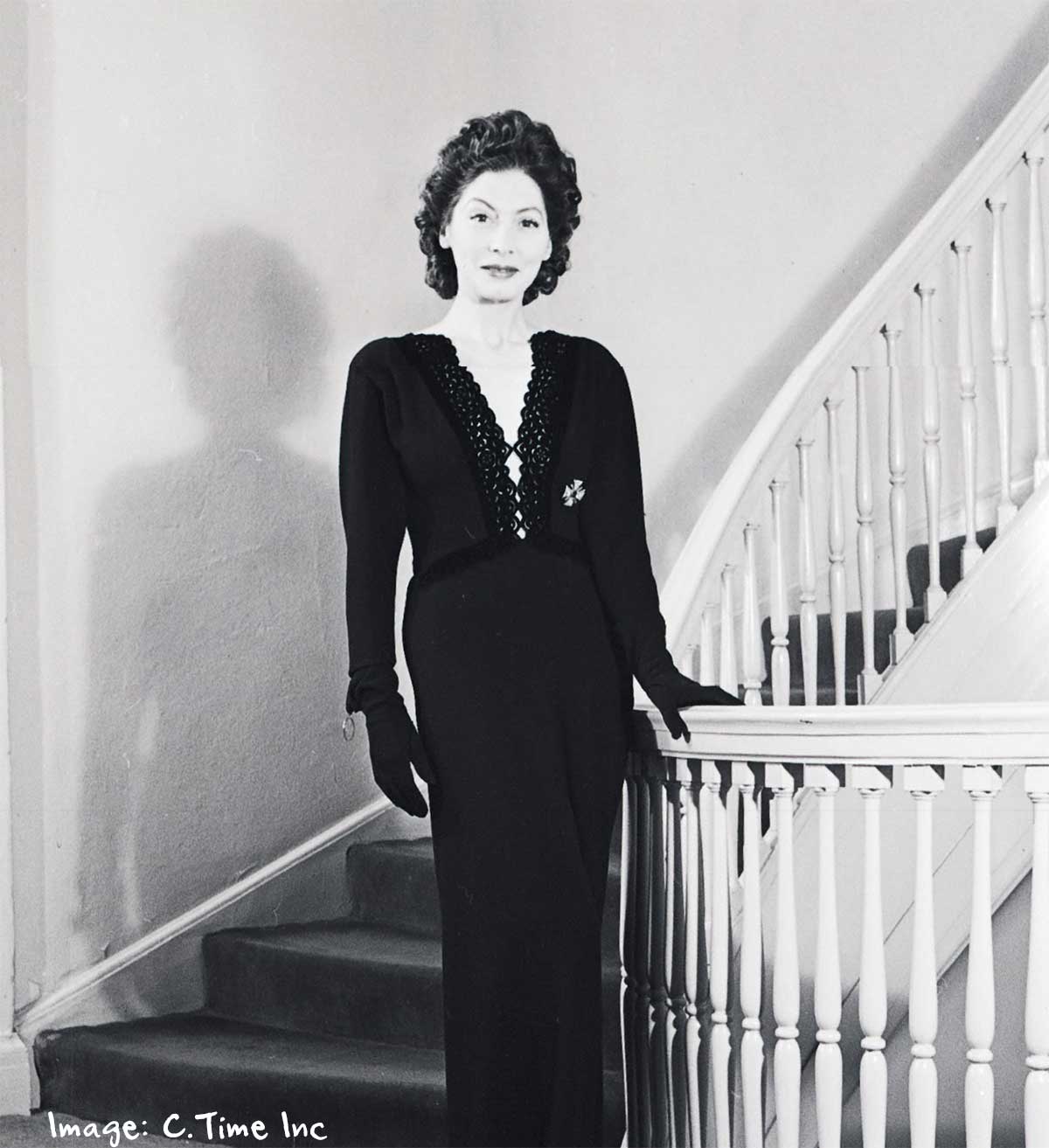
With a “look”, a little suit and a knowledge of all the angles, Hattie Carnegie has risen from poverty to be absolute boss of a $6,500,000 dress business.
Nobody has ever been able to define style to the satisfaction of anybody else. It might be called a means of expression; one of the great French fashion designers (male no doubt) is supposed to have said “We have created a class of cultured women who are inarticulate except in the wearing of clothes.”
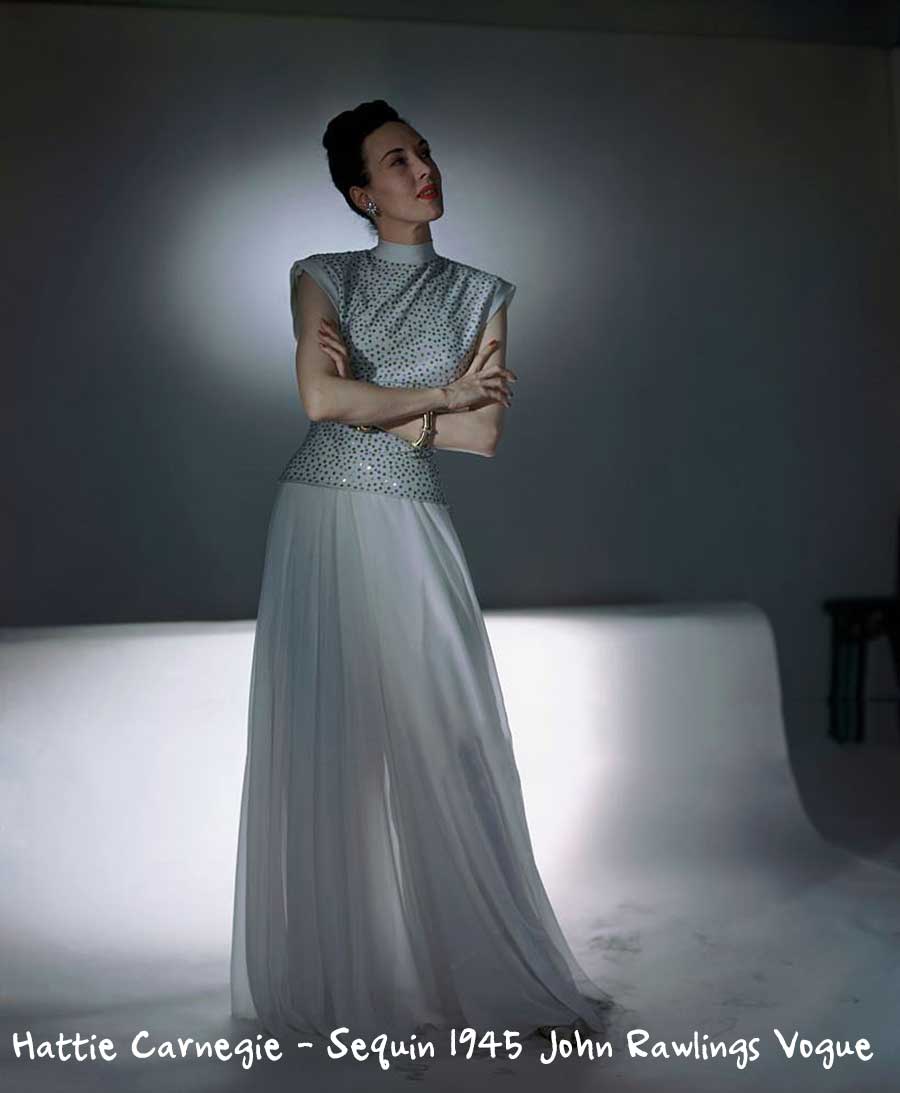
Elusive as style is, it is the foundation of a tangible and impressive business structure. New York City’s greatest industry, by a wide margin, is the manufacture of women’s clothes. No other industry employs so many skilled workers.If women suddenly stopped worrying about style, there would be, overnight, a minor depression. But now women’s clothing in the 1940s is not just big business. In its other aspects it is a fine art. And the one person who knows it all from start to finish – from the designer’s sketch to the inexpensive reproductions hanging on racks in a hundred stores – is Hattie Carnegie.
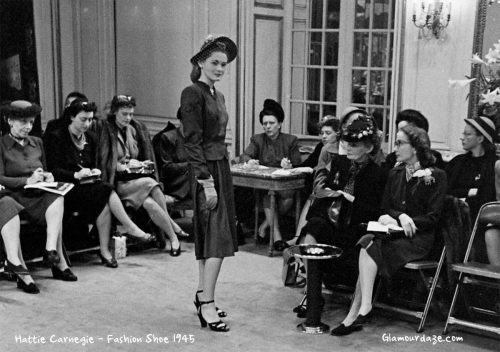
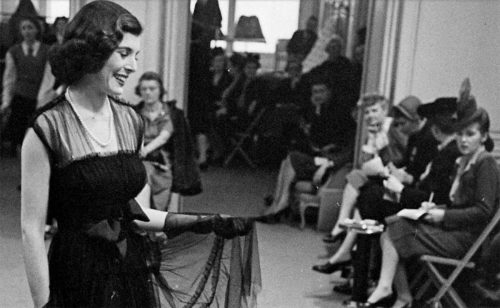
Hattie Carnegie’s small, brisk, handsome figure is the dominant one in her field. No other one person has a working acquaintance with so many angles of the business. In the early 1930s she established herself as the great American spokesman for the Parisian influence in fashion; then she swooped down out of the stratosphere of haute couture and showed that it was possible, with no sacrifice of taste, to adapt the Paris styles to the demands of a wholesale “line” of ready-made clothes. She did the same thing with hats.
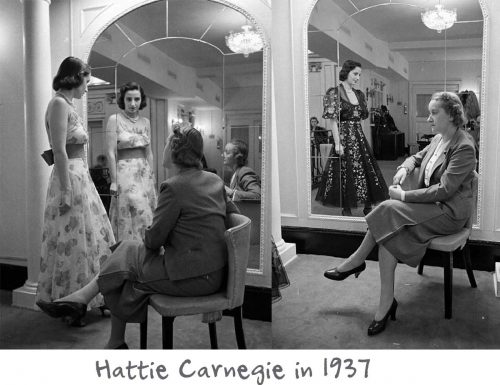
Cut off from Paris for the past five years, limited to government restrictions on fabric use, she has nevertheless retained in her clothes the distinction which is known as “the Carnegie look”
Along with Claire McCardell, her name is synonymous with the wider known American Look. which ascended to new heights during the recent world war, at Paris’s expense!
The Carnegie look amounts to her feeling about the way a well turned-out woman should look. Her clothes are seldom faddy or extreme; in a Carnegie model the ‘trend’ is well under control. A more than usually articulate customer of Hattie’s once described the typical Carnegie dress as “healthy, normal, attractive, gay and nifty.”
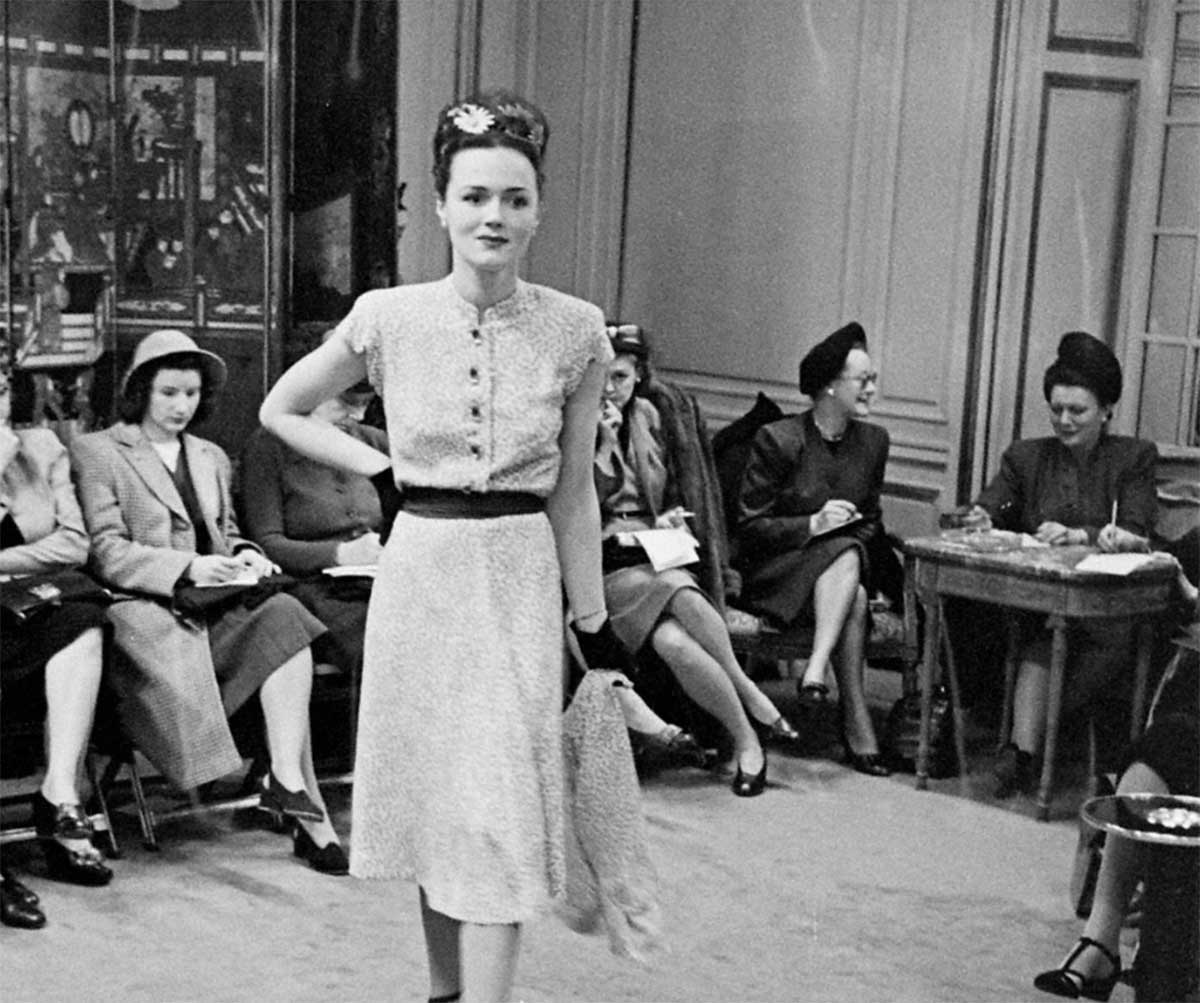
Hattie is old fashioned, with a serene conviction that women dress to please men, not to impress other women, and says that she prefers to dress a woman so that, when she enters a room, people will say, “What a beautiful woman!” rather than, “What a beautiful dress!”
Her “Carnegie suit” is her specialty, just as the “little black dress” is Nettie Rosenstein‘s. She doesn’t think that age is a vital factor in the selection of clothes;“It’s much better to wear clothes that are too young for you than clothes which are too old!”
It would be hard to overestimate Hattie Carnegie’s influence on the fashion industry. During the war she was approached now and then by the government who wanted her to put over certain little economies in the handling of materials. Her techniques were quickly pirated by the mass production manufacturers, who were convinced they had seized another glamorous Carnegie secret!
The corporate Hattie takes in over $6,500,000 a year and employs more than a thousand people. The bulk of this income is from wholesale. In every American city, one or more stores sell dresses with the Hattie Carnegie label with the address 711 Fifth Avenue New York. Four times a year her designers get together a collection of suits, dresses, evening gowns, furs and coats. These are all new designs to be inspected by out of town buyers. Each collection can have up to 150 models. It is in the range and variety of her collections that Hattie shows her genius. Each item is practical and thus sells in quantity across the country, but it also comes with all defining Carnegie stamp.
Her wholesale line of hats bear the label “Hatnegie Inc”. Hattie herself though does not wear hats and in general feels they should key in with an ensemble rather than attract individual attention.
She also has a line of cosmetics and frankly hopes to challenge the two giants of women’s cosmetics Helena Rubinstein and Elizabeth Arden.
Back in the early 1930’s, Carnegie reacted to the Depression by going straight into low-priced wholesale dresses under the name of Spectator Sports – an inspired misnomer.Today this little outpost of her business empire, still retailing inexpensive frocks for as little as $50 brings in the most revenue for the least trouble.
Much of its success is down to designer Mr Bruno, who joined forces with Hattie in 1932. Bruno is the one designer who she trusts to think exactly the way she does, almost without supervision.
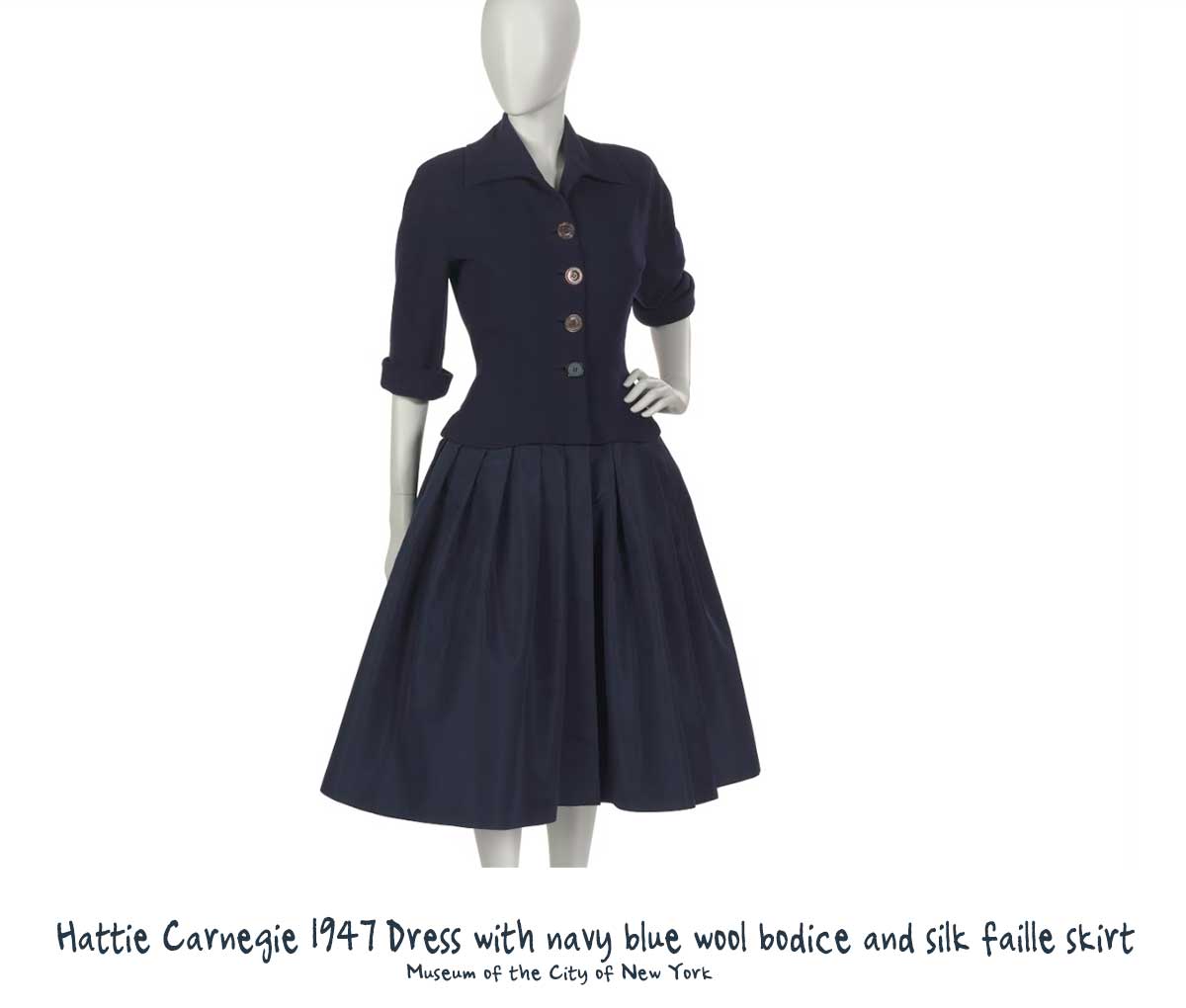
Her other trusted lieutenant is executive assistant Josephine Hughes who is Hattie’s closest confidante. The Carnegie business is quite a family affair too, with two brothers Herman and Tony, as well as her sister Rose who is the director of Spectator Sports.
The retail shop brings in a third of her income. In 1925 Hattie bought the building at 42 East 49th St.,New York, just off Park Avenue. Here during the past 20 years she has sold clothes in person to practically every well-dressed woman in the country. The shop lists over 16,000 charge accounts, 6000 of these active continuously.The shop also sells cosmetics, jewels, perfume, hats and even chocolates, the recipe for which Hattie got from Paris. She also sells vintage clothing and antiques .Her regular customers achieve the distinction of having their own personal ‘dummy’ assigned to them, who has their specific measurements.
Born to an immigrant family from Vienna,her father passed away not long after coming to the USA. Until Hattie began to make money working in dress shops, the family lived in severe poverty. It is no accident she changed her surname, choosing to name herself after Andrew Carnegie, then the richest man in the country.She got a job in a wholesale dress house. It was unskilled work; she didn’t then know, and has never learned, how to cut or sew clothes. But she had clothes sense, and her suggestions for dress ensembles began to sell better than others and she was on her way.
Hattie herself does not remember immediate success. ” I had one skirt and three blouses for ages,” she recalls. Her only treat was to spend her spare change on going to the Opera. ” I must have seen Madam Butterfly at least 50 times!”
Her first shop was set up in 1909 with Rose Roth in East 10th st as “Carnegie – Ladies Hatter”. They moved uptown four years later to open a millinery and dressmaking shop at the corner of Broadway and 86th. Riverside Drive. A number of fine ladies soon began to patronize the store, “God only knows how they found us,” says Hattie, “we never advertised!” One of those women was Mrs W.R Hearst. After the war, Hattie bought out her partner and a little later moved to her present location.
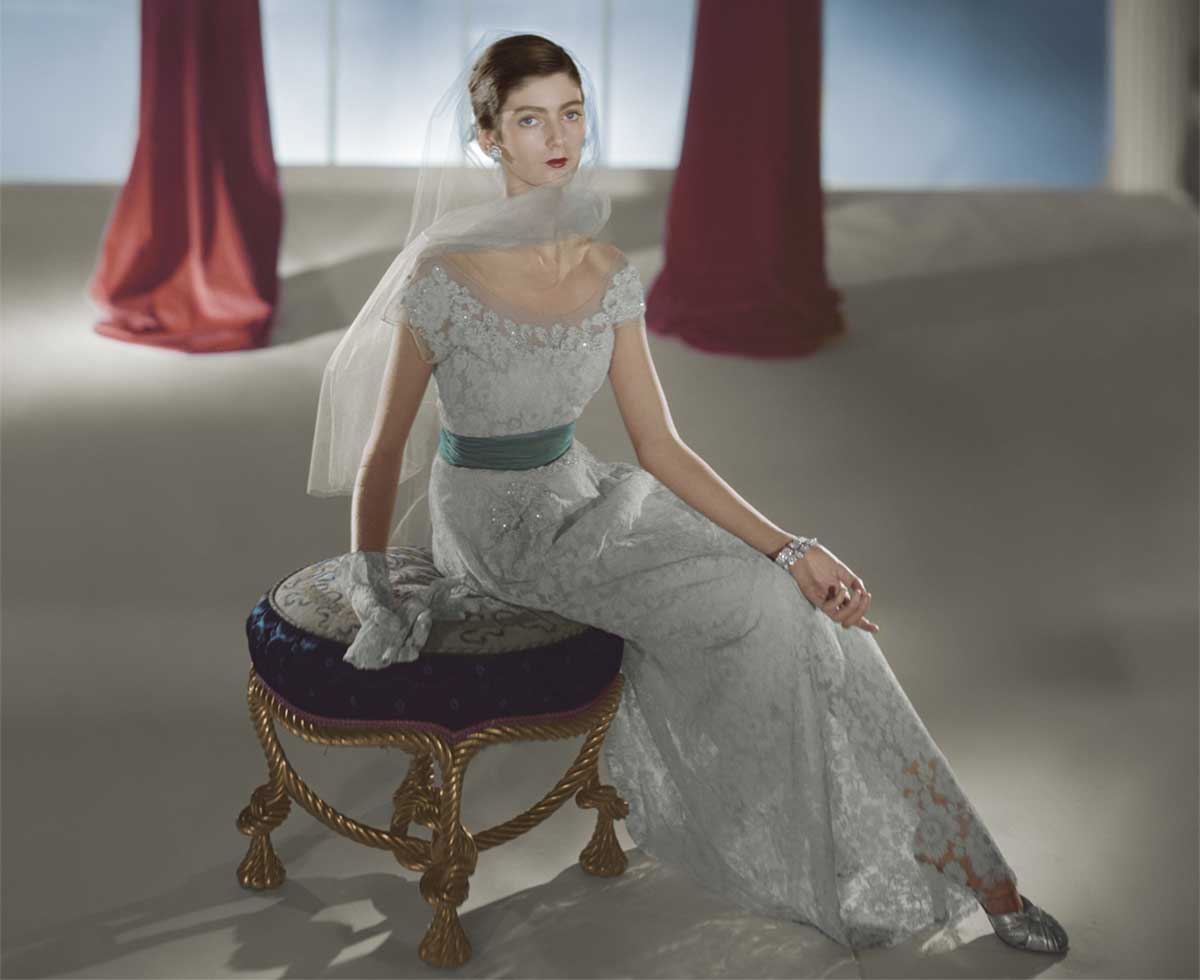
For Hattie, her frist trip to Paris in 1919 was a revelation. Lunching at the Ritz no less, she noticed a Frenchwoman wearing a stunning dress. “It was black, trimmed with fringe and topped with a fringed shawl”. When the woman retired tot he powder room, Hattie followed her to ask where she had bought the dress. That same afternoon, she found herself meeting Madeleine Vionnet.
She bought literally hundreds of outfits and within a year, Vionnet, already a well known designer in France and the UK, became an international sensation. Hattie considers her the greatest of all the designers.
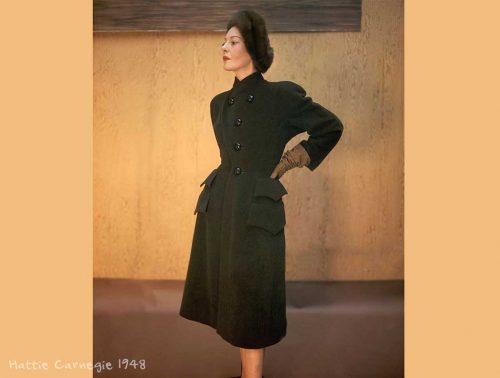
Hattie soon became one of the characters of 1920’s Paris. At shows, journalists watched her closely. Hattie might sit in an apparent doze as the new Lanvin daytime frocks were shown, then spring to attention when the coats appeared. “COATS MOST IMPORTANT LANVIN COLLECTION”, the westbound headlines would shriek the next day.
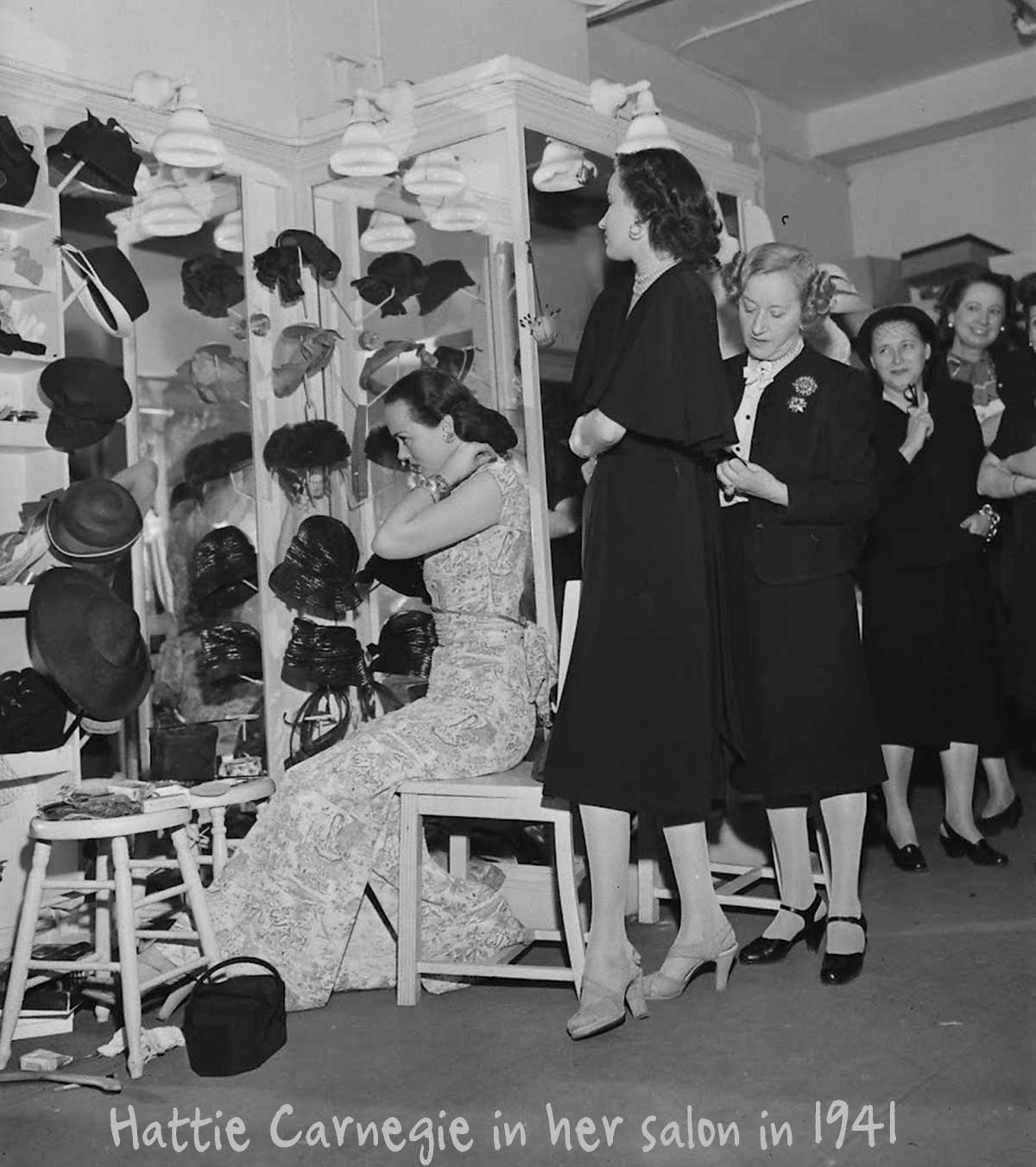
Like many women in the fashion business, Hattie can’t or won’t keep her private life a thing apart. She dresses herself in her own stock and is not averse to literally selling the clothes off her back. Not long ago she caused some raised eyebrows when she appeared in her second floor salon in a “little Carnegie suit” but no skirt; somebody was trying that on.
That’s all !
©Glamourdaze 2017
Originally published in Life Magazine 1945.


